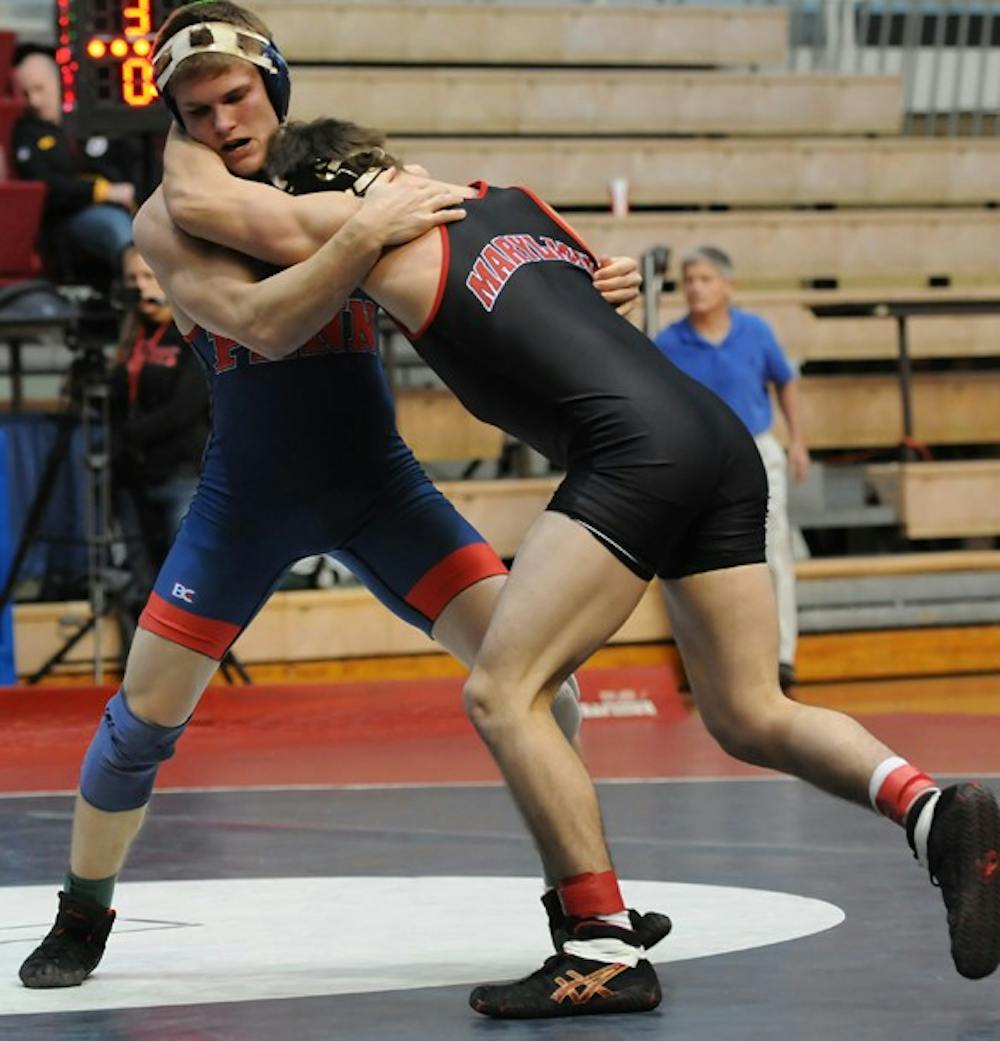
For most people, gaining or losing 10 pounds is a major transition. For some on the Penn wrestling team, though, it’s nothing out of the ordinary.
In fact, on the team’s roster, 11 out of 27 wrestlers are listed at multiple weight classes.
Some have a relatively small leap to make between classes. Most of those who alternate between weights only have to shift between 149-to-157 pounds, or 157-to-165.
In those cases, a wrestler usually stays at one of those two classes for most of the year, being called up or down only in an emergency situation.
One such occasion befell the Red and Blue just this past Saturday.
With normal 149-pounder Steve Robertson unavailable, freshman Mark Pinero was called up to wrestle above 141 in his first collegiate start.
Wrestling against heavier competition certainly didn’t hurt Pinero, as he went 2-0 on the day in Penn’s loss to Harvard and victory over Brown.
Though accustomed to competing at 141, Pinero didn’t necessarily change much — neither in his technique nor his diet — in preparation for competition against 149-pounders.
“I don’t let it affect me,” Pinero said. “I weigh 149, they weigh 149. I weigh 141, they weigh 141. So it’s just a person … you have to go out there and expect to do what you always do when you face heavyweights.”
Pinero did not have to change much to make 149 pounds. Rather, he spends most of the time before a match closer to 149 than he does 141.
“141 was a hard cut for me toward the end of the year,” he noted. “I just didn’t have to lose as much weight to get to 149.”
The concept of losing weight to make a particular class brings up an interesting question — how exactly does one go about making different weight classes?
It’s not exactly rocket science. Rather, it’s more a matter of training to stay within what coach Rob Eiter describes as “striking distance” of whatever weight class at which a particular wrestler may be needed.
“You always [have to] be ready to go,” Eiter said. “So you’ve got to be within striking distance of your weight class, and the striking distance is different for each kid. It could be five pounds, it could be seven pounds, eight, nine pounds.”
In other words, wrestling at two different classes is more often than not a matter of being ready to go at either class at the beginning of the week, and then losing or gaining the appropriate amount of weight once the lineup for the upcoming match is set.
For many, the chance to wrestle at a different weight becomes a positive opportunity, giving grapplers a chance to face new competition without the normal pressure of their class. Or, in Pinero’s case, the opportunity to record a collegiate start.
“Sometimes it’s not a bad thing going up a weight because there’s no pressure,” Eiter said. “You know, sometimes guys tend to perform a little bit better, they’re in a situation where their minds are at ease a little bit.
“It’s like, ‘Okay, I’m just going to wrestle and see what happens.’”
As wrestlers like Pinero have shown, taking such an approach often ends up working out for the best.
The Daily Pennsylvanian is an independent, student-run newspaper. Please consider making a donation to support the coverage that shapes the University. Your generosity ensures a future of strong journalism at Penn.
DonatePlease note All comments are eligible for publication in The Daily Pennsylvanian.





